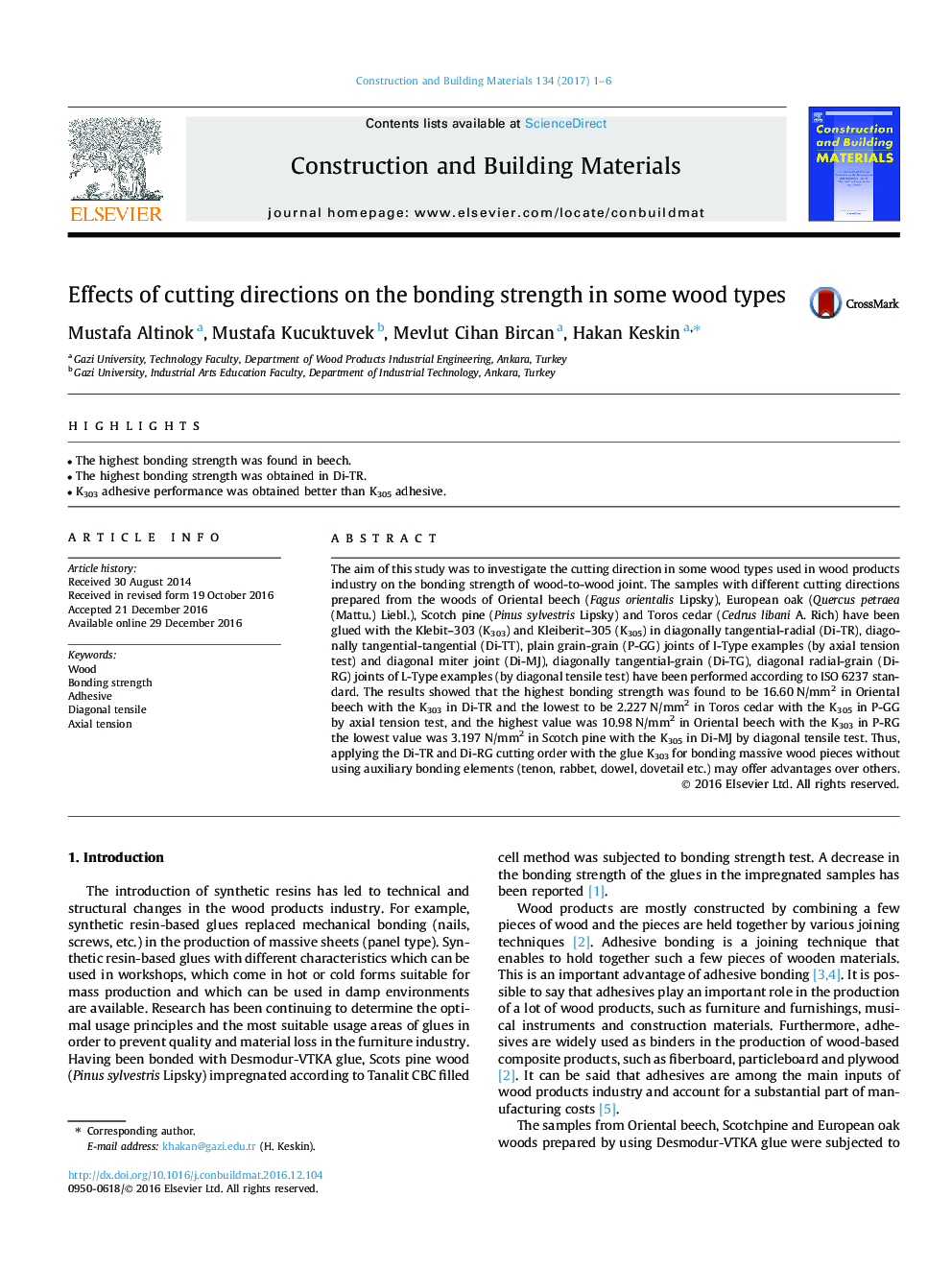| Article ID | Journal | Published Year | Pages | File Type |
|---|---|---|---|---|
| 6480771 | Construction and Building Materials | 2017 | 6 Pages |
â¢The highest bonding strength was found in beech.â¢The highest bonding strength was obtained in Di-TR.â¢K303 adhesive performance was obtained better than K305 adhesive.
The aim of this study was to investigate the cutting direction in some wood types used in wood products industry on the bonding strength of wood-to-wood joint. The samples with different cutting directions prepared from the woods of Oriental beech (Fagus orientalis Lipsky), European oak (Quercus petraea (Mattu.) Liebl.), Scotch pine (Pinus sylvestris Lipsky) and Toros cedar (Cedrus libani A. Rich) have been glued with the Klebit-303 (K303) and Kleiberit-305 (K305) in diagonally tangential-radial (Di-TR), diagonally tangential-tangential (Di-TT), plain grain-grain (P-GG) joints of I-Type examples (by axial tension test) and diagonal miter joint (Di-MJ), diagonally tangential-grain (Di-TG), diagonal radial-grain (Di-RG) joints of L-Type examples (by diagonal tensile test) have been performed according to ISO 6237 standard. The results showed that the highest bonding strength was found to be 16.60Â N/mm2 in Oriental beech with the K303 in Di-TR and the lowest to be 2.227Â N/mm2 in Toros cedar with the K305 in P-GG by axial tension test, and the highest value was 10.98Â N/mm2 in Oriental beech with the K303 in P-RG the lowest value was 3.197Â N/mm2 in Scotch pine with the K305 in Di-MJ by diagonal tensile test. Thus, applying the Di-TR and Di-RG cutting order with the glue K303 for bonding massive wood pieces without using auxiliary bonding elements (tenon, rabbet, dowel, dovetail etc.) may offer advantages over others.
